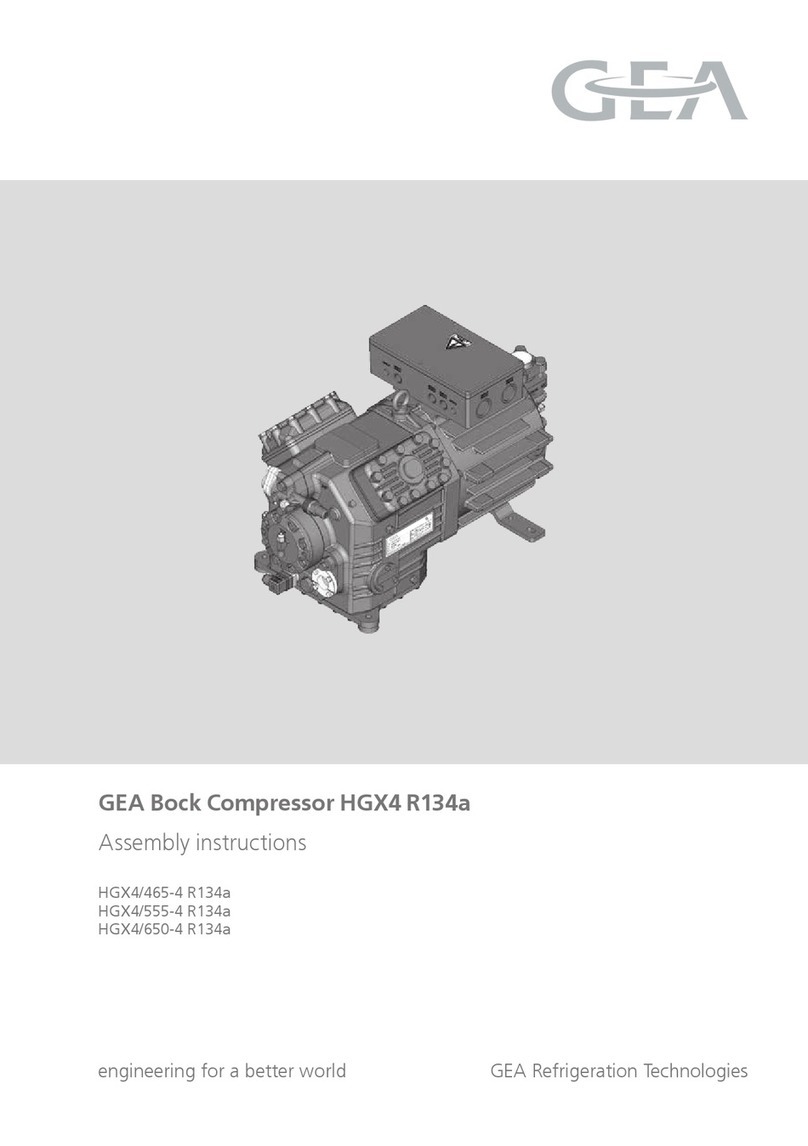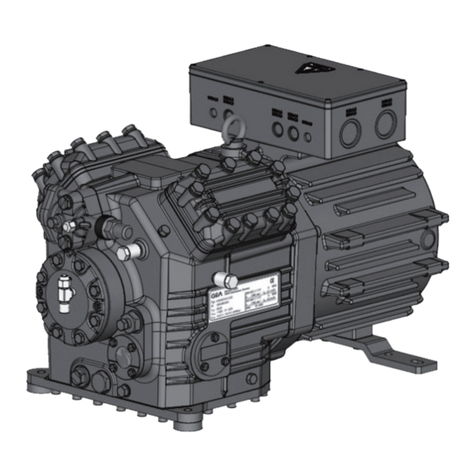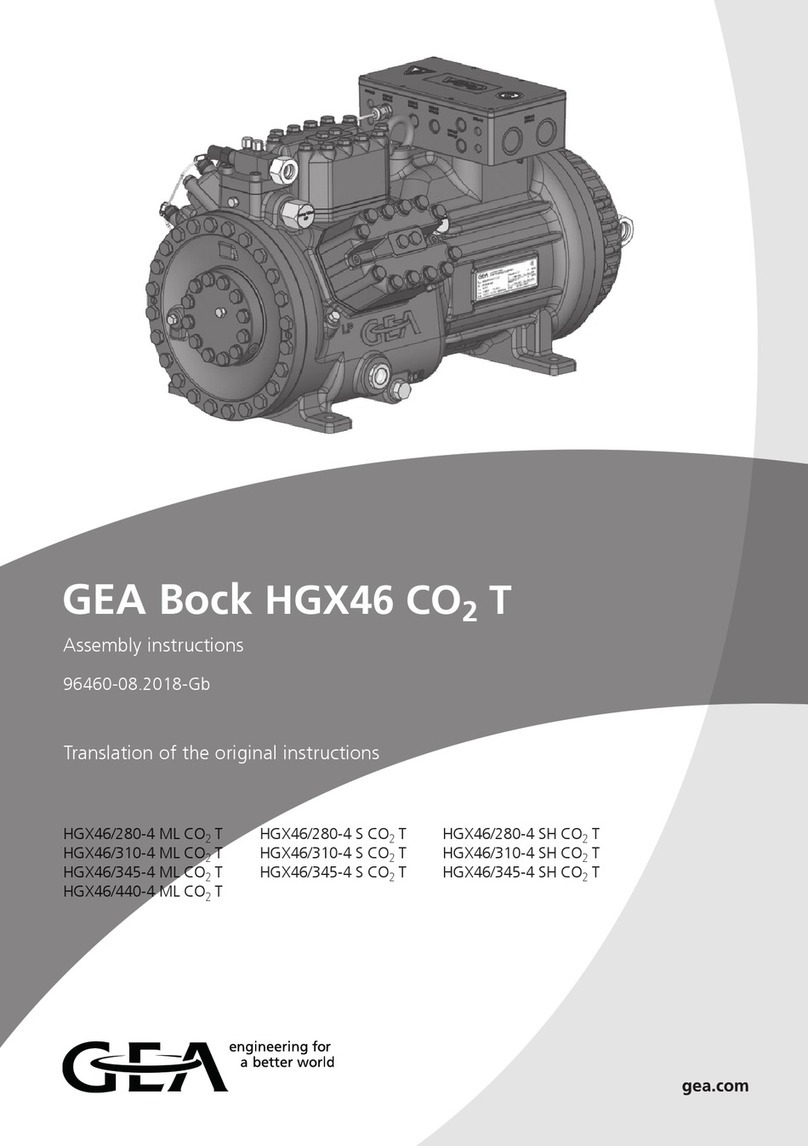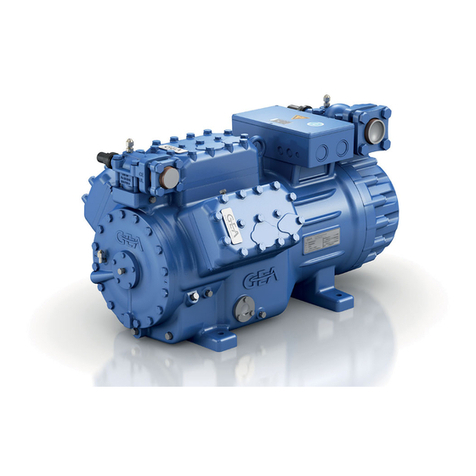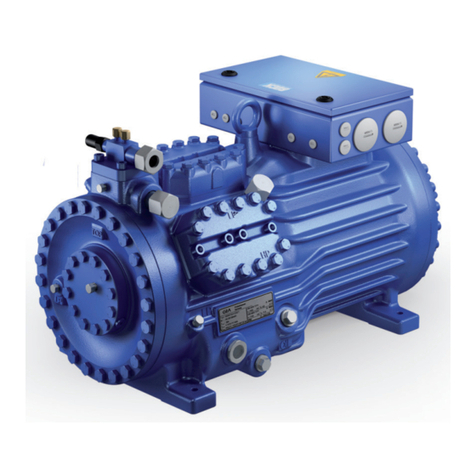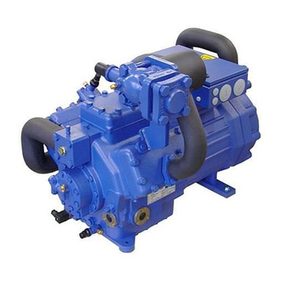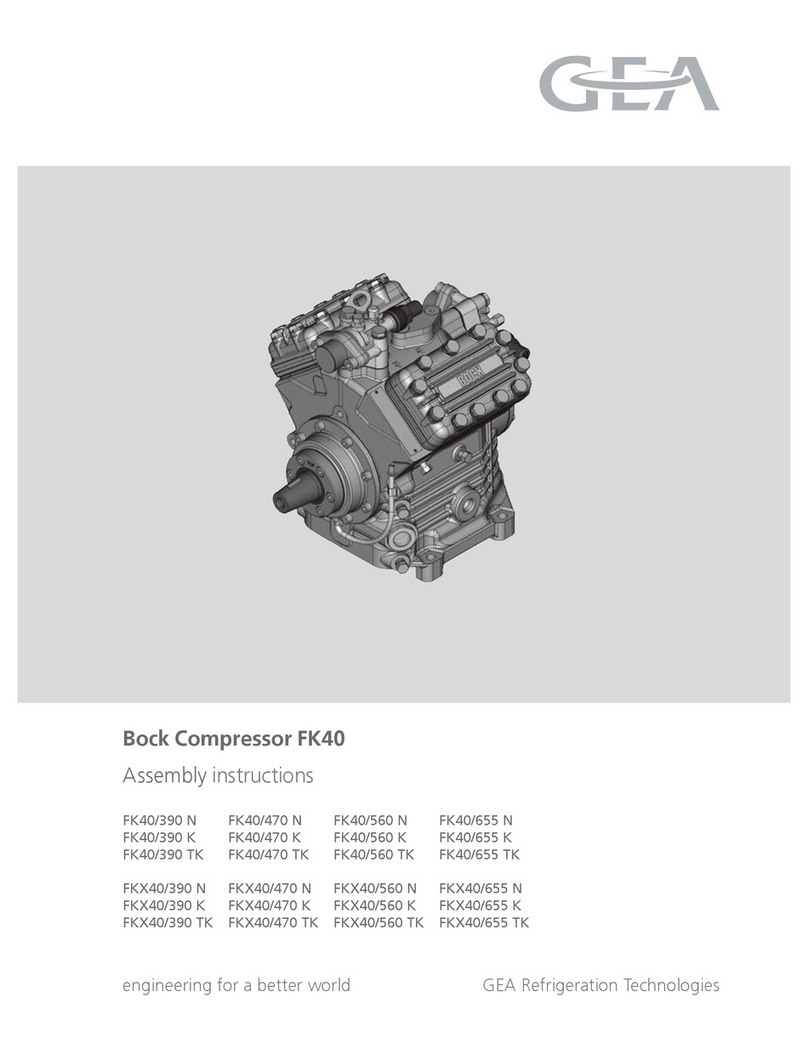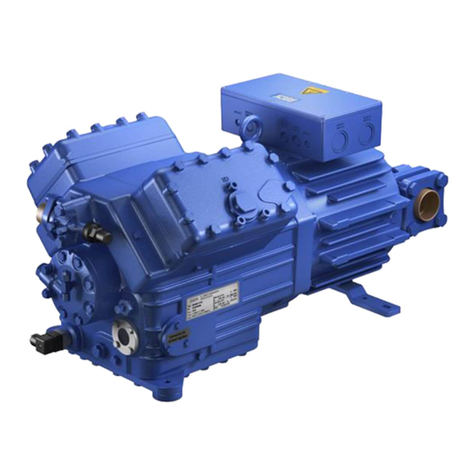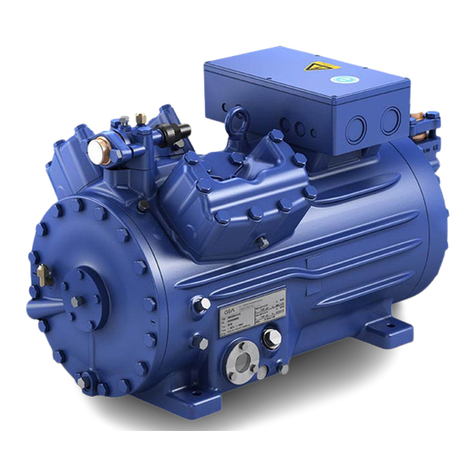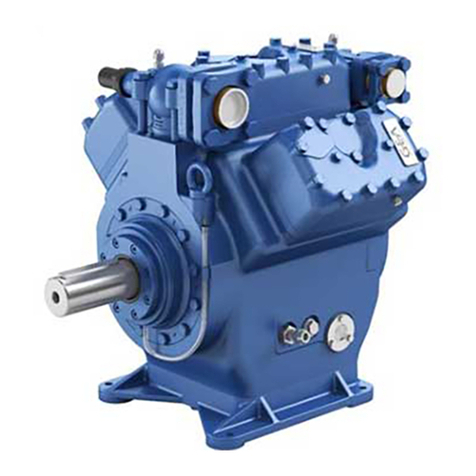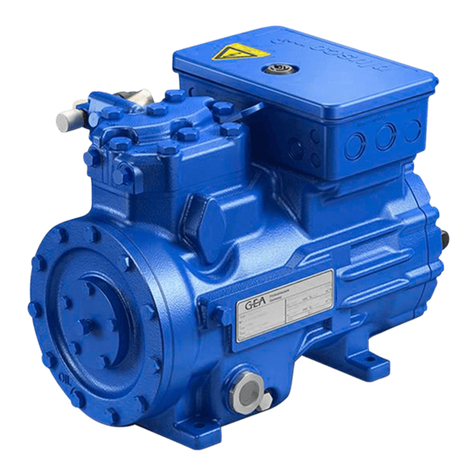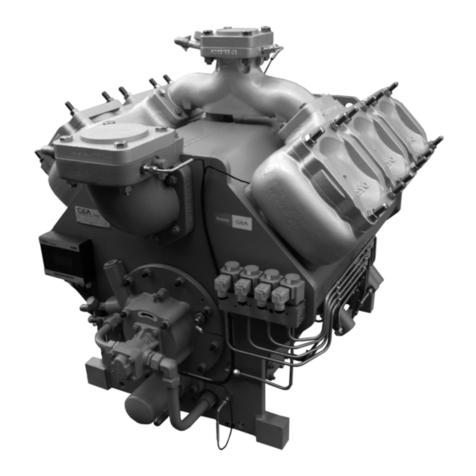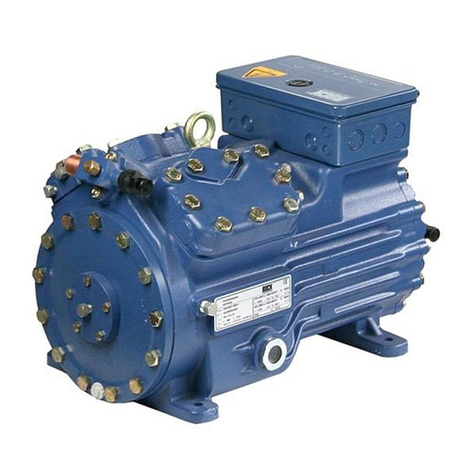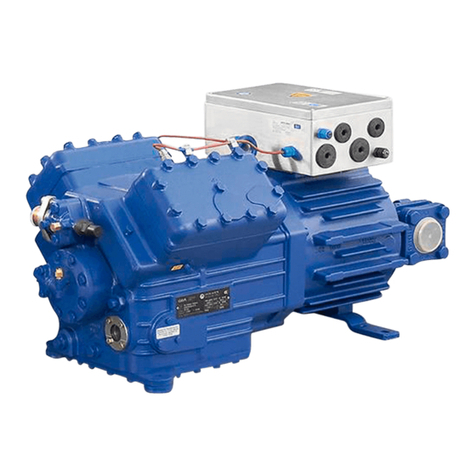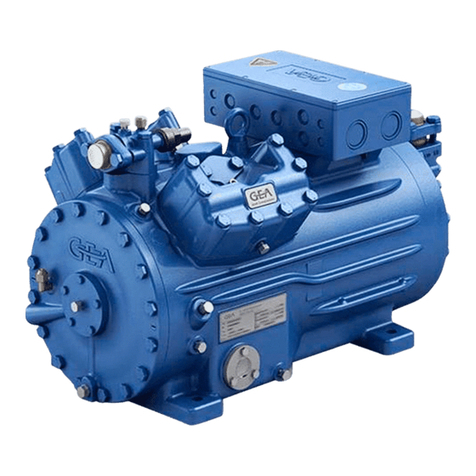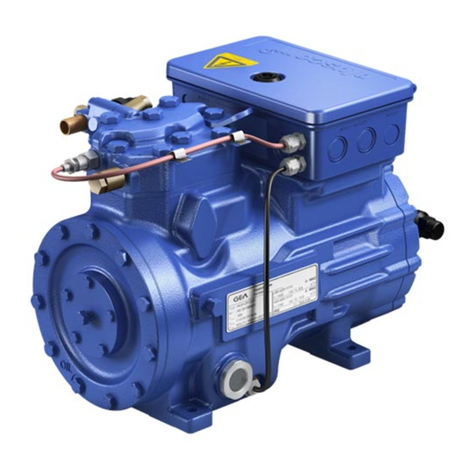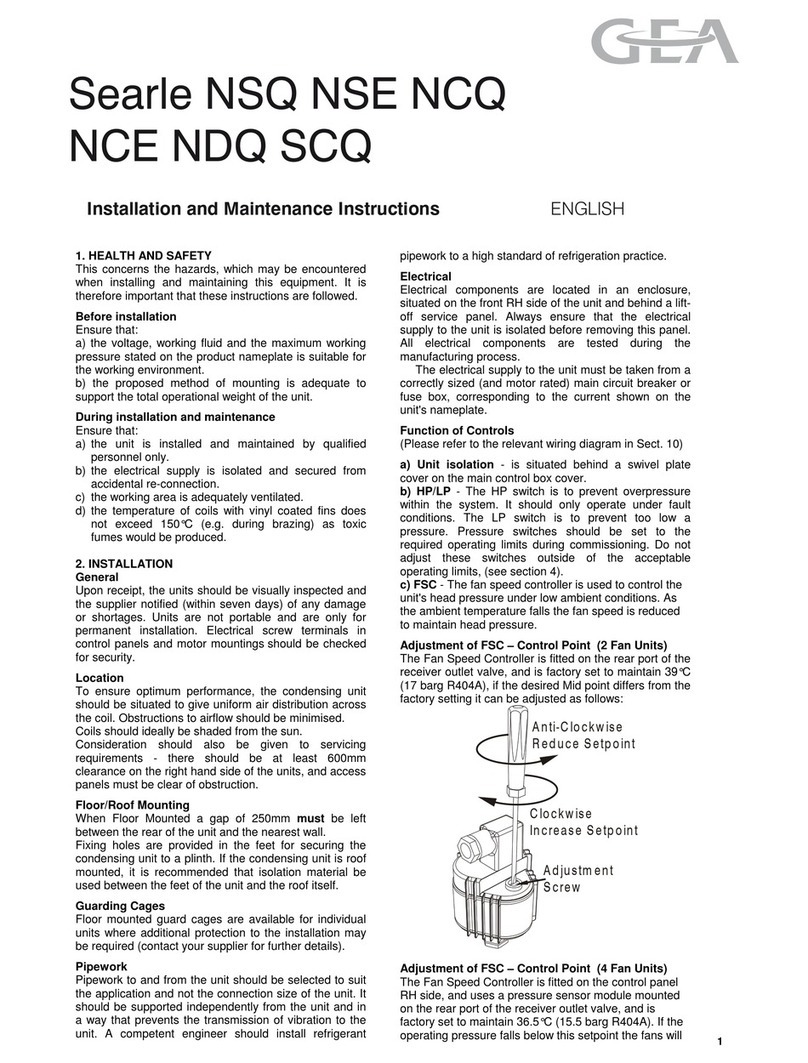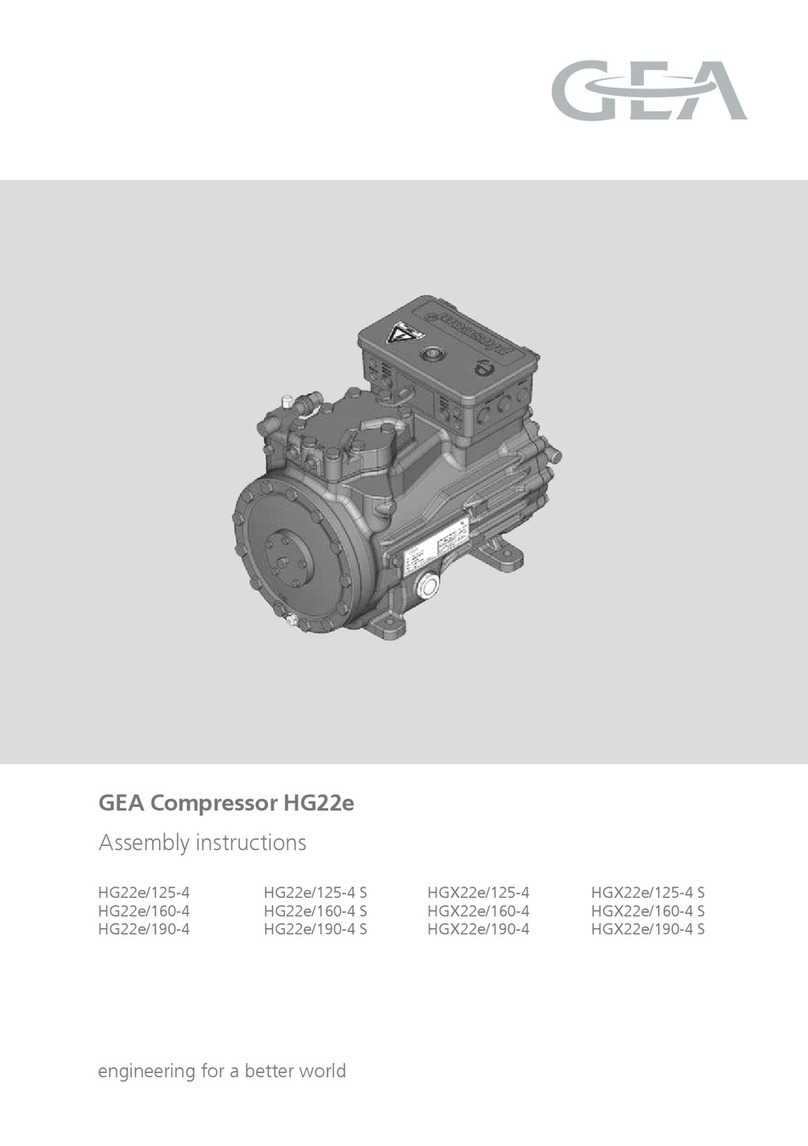
SYMBOLS USED
Danger
Stands for an immediate danger leading to severe physical injuries or death.
► Description for avoiding the danger.
Warning!
Stands for a potentially dangerous situation leading to severe physical
injuries or death.
► Description for avoiding the dangerous situation.
Caution!
Stands for a potentially dangerous situation which could lead to minor
physical injuries or damage to property.
► Description for avoiding the dangerous situation.
Notice
Stands for important information that must be observed for the intended use
and function of the product.
► Description of the required action for the intended function of the product.
SAFETY INSTRUCTIONS
Hint!
This manual must be careful read and understood prior to installing
and servicing the compressor (package)
Safety
This manual is written with great care, but the contractor/installer is held
responsible to examine this information and to take care of possible additional
and/ or deviated safety measures.
Safety instructions
It is the task of the contractor/installer to inform and explain to his client the
operation of the compressor (Package).
Do respect all federal, state or local safety regulations/legislations during
installing, connecting and operating this compressor (package).
Construction changes
Warning!
In compliance with the regulations of the Pressure Equipment
Directive it is mandatory that no changes be made to the construction
of pressurised parts such as the crankcase housing, suction filter
housing etc.
P-NL-094_imm_VHS_English_13
26.07.2021 3
